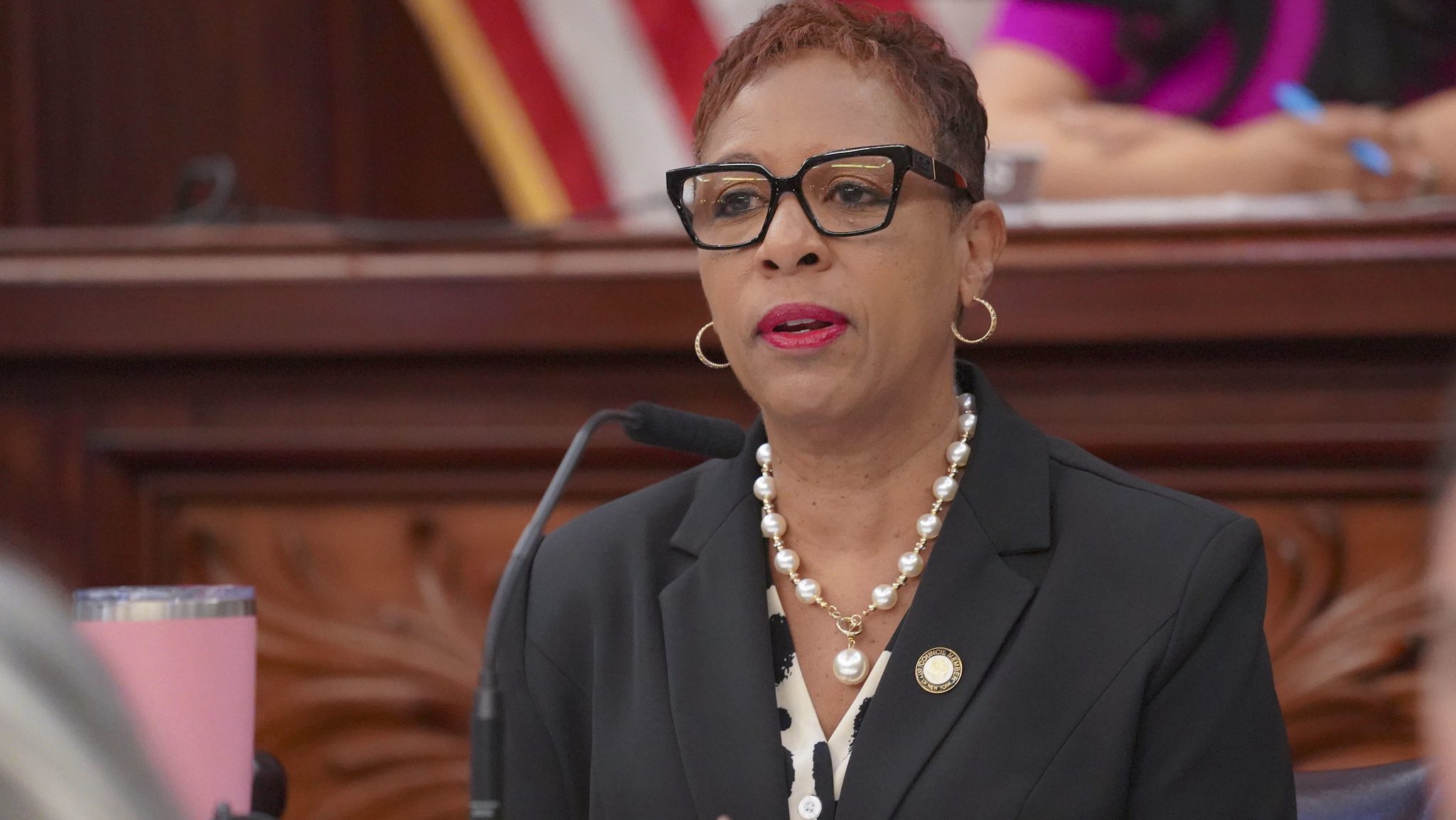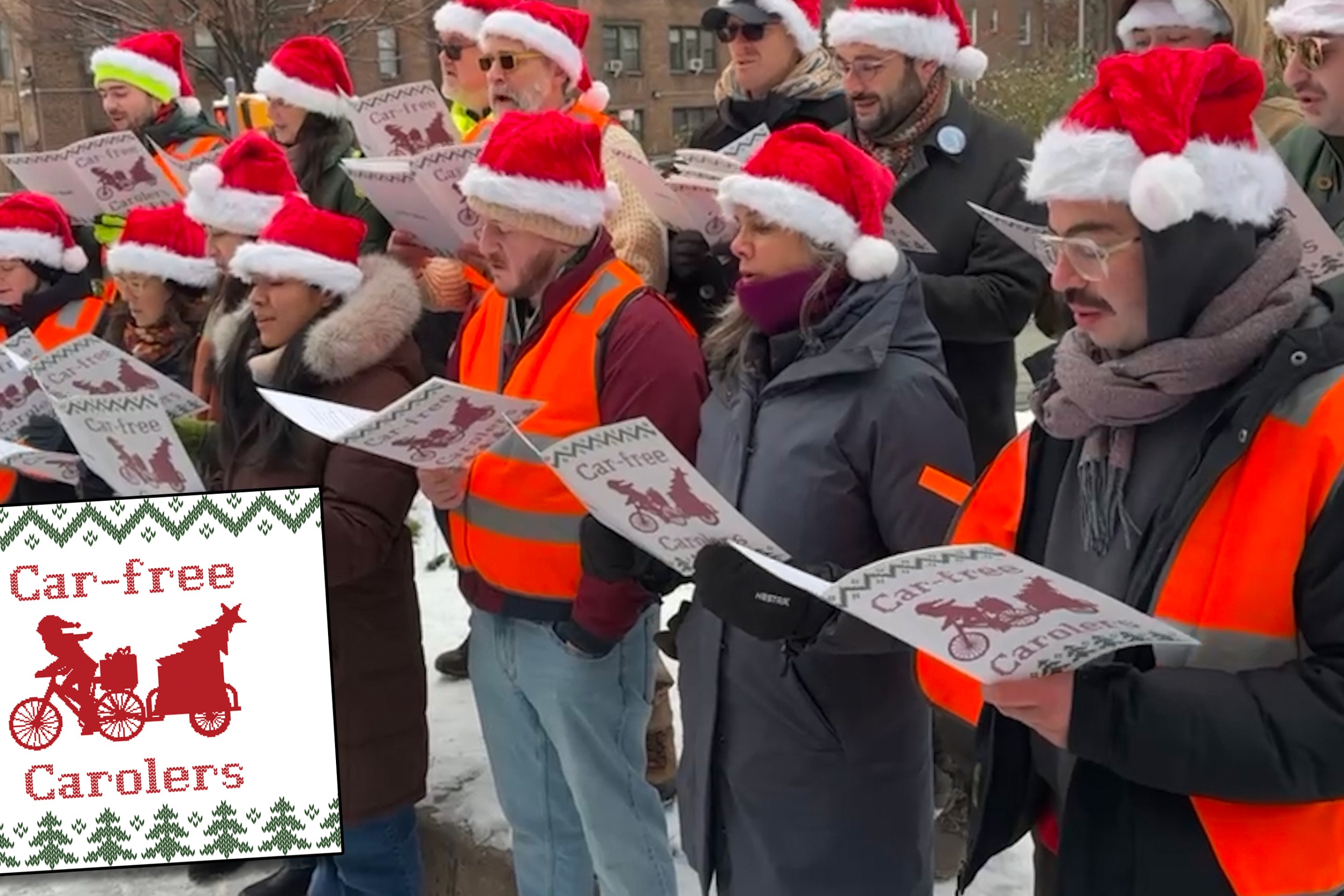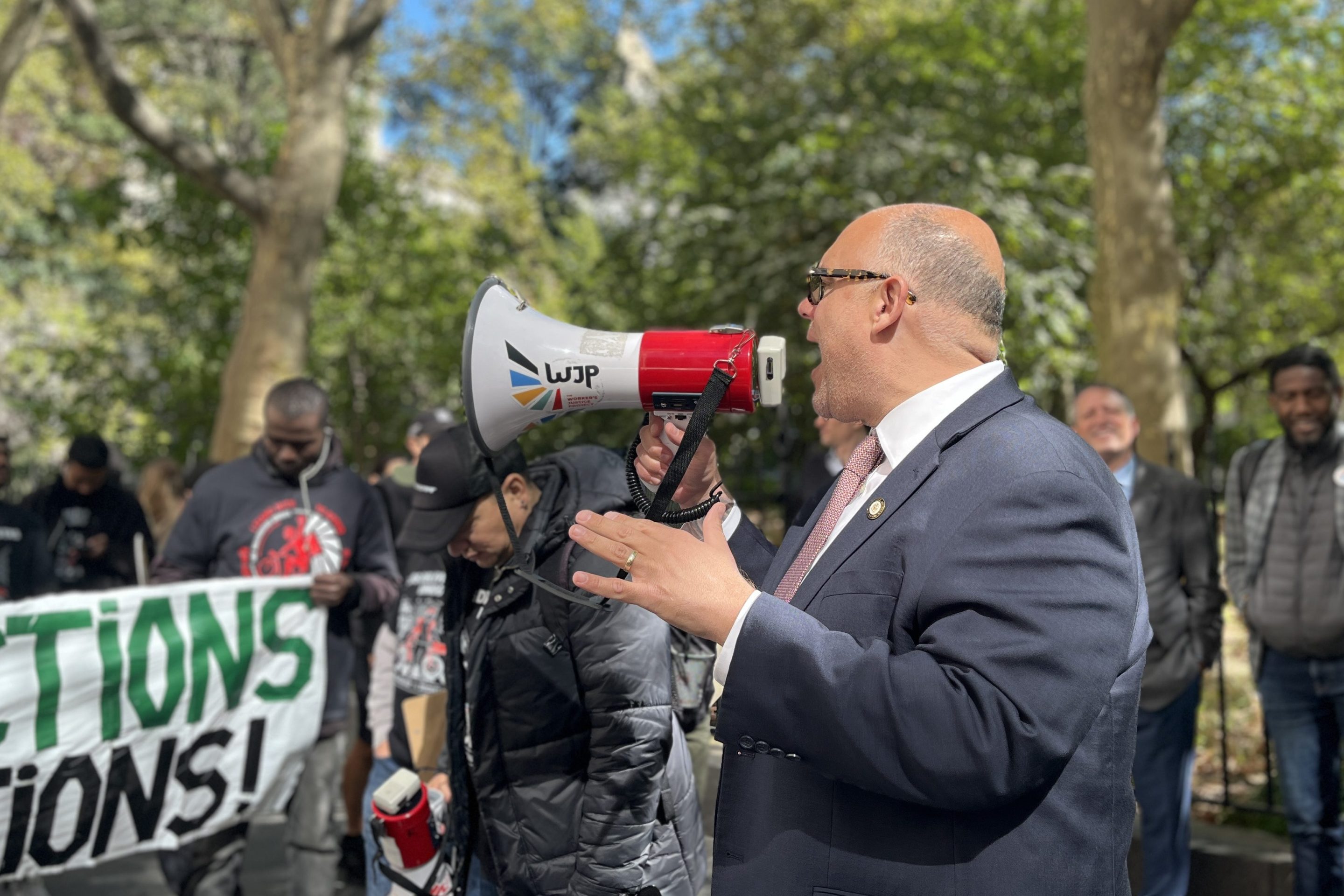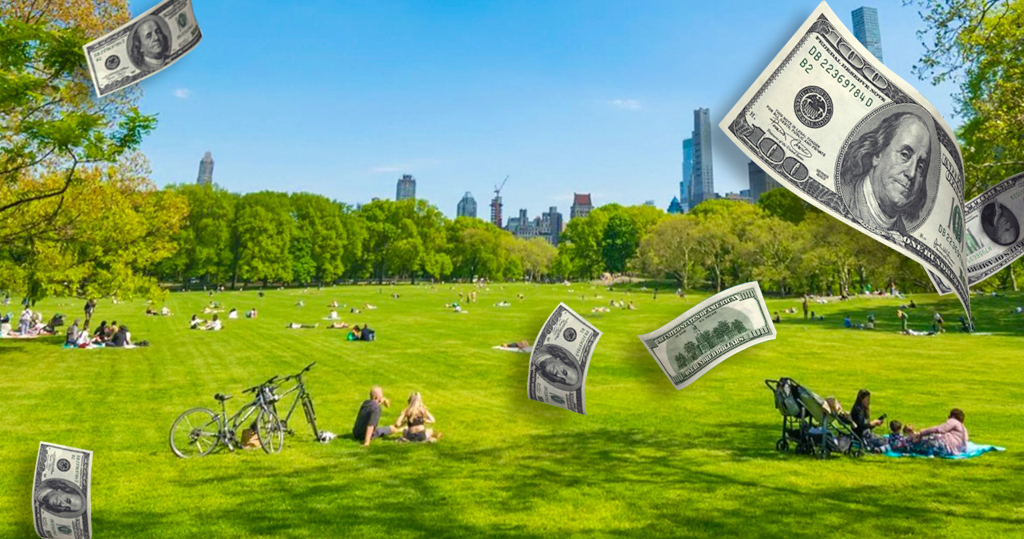They put the "meek" in Meeker.
The Department of Transportation still hasn't finished a critical bike lane under the Brooklyn-Queens Expressway that the agency has been stalling for over four years even after identifying the strip's danger and lack of proper signals.
From 2014-2020, 11 people were killed or severely injured on the stretch of Meeker Avenue between Vandervoort and Metropolitan avenues. Numbers like that compelled the agency to propose a two-way protected bike lane in 2021 as a crucial link between the Williamsburg and Kosciuszko bridges and to repurpose car storage under the BQE into something useful to the public. The agency also specifically cited the lack of crosswalks under intimidating highway as a major concern.
The bike lane was supposed to be finished by the end of 2022, but the DOT has not made any improvements to the corridor in at least two years, leaving it such a dire state that the agency refuses to put in on the official city bike map.
“They don’t consider it complete enough or safe enough to tell people to use it,” said Meryl LaBorde, a Greenpoint resident who has advocated for the so-called Make Meeker Move campaign as a volunteer for Transportation Alternatives.
The agency's failure to finish the project means that the existing half-assed bike path is still plagued by unsignalized intersections, incomplete lane markings, a dangerously designed right-of-way, and an overall lack of proper maintenance.
Eyes on the street
The two-way bike lane was designed to run under the BQE along Meeker Avenue, between Vandervoort Avenue, near the Brooklyn landing of the Kosciuszko Bridge, and Metropolitan Avenue. (It's worth noting that Vandervoort remains the same unrepentant industrial sluice that it was when a truck driver killed a cyclist in 2020.)
Streetsblog traveled Meeker, starting from the southwestern end at Metropolitan, to see what cyclists and pedestrians were being subjected to. And it wasn't pretty:
At the intersection of Union and Meeker avenues, the bike lane runs directly into a curb with no clear instructions for cyclists. “It’s just not really marked,” said Eric Arsovski, an Astoria resident and longtime bike commuter. “I’ve seen people bust their shit, specifically right here.”
At Lorimer Street, two blocks northeast, there is no signal for cyclists or pedestrians. Many large trucks use the streets to access the BQE and often block intersections as shown here.
Traveling further up Meeker, at Manhattan Avenue, there are also no crosswalk markings or signals, leaving cyclists to fend for themselves in order to cross the street. To make matters worse, the DOT built the lane to run directly into one of the yellow support beams.
In its initial presentation to Community Board 1 way back in 2021, DOT said the project would "revitalize and maintain space underneath [the] BQE," but the unfinished project doesn't do that: the bike path is not routinely cleaned. And at Graham Avenue, it's so dirty that the road markings can barely be seen.
“It’s filled with trash,” said LaBorde.
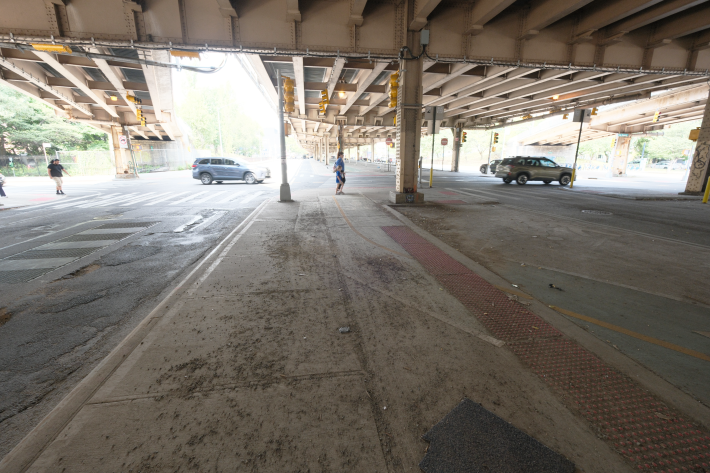
Even at intersections with proper crossings, like at N. Henry Street in the photo below, car drivers stop directly in the path of pedestrians and cyclists — a ticketable offense (hint, hint 94th Precinct).
The greatest failure, perhaps, is that the DOT hasn't made proper connections from the Meeker project to other bike lanes with which it intersects‚ including the much-touted, but also unfinished, bike lane on McGuinness Boulevard north of Meeker.
“They haven’t put any sort of markings about what you're supposed to do to get from Meeker onto McGuinness Boulevard,” said LaBorde, adding that when she asked the DOT what cyclists should do when trying to go from Meeker to northbound McGuinness, she was told that they should to ride on the sidewalk for the half block before the bike lane starts. (There are no signs that suggest that, and car and truck drivers frequently use the sidewalk to access the adjacent gas station or just to park.)

Urban planner Mike Lydon singled out that intersection as a metaphor for the whole failed project.
“A bike lane is only as good as its intersections,” said Lydon, principal at Street Plans. "If you have one bad experience at an intersection, especially if you're a newer cyclist, you're not going to want to ride there again."
Meanwhile, it's unclear if the Adams administration will even finish the project, given its arms-length approach to finishing long-promised safety projects.
“There’s just all these little missing pieces that make it a pretty unpleasant experience,” said LaBorde. “There is now no indication that they will ever actually do more than what is currently there.”
Streetsblog reached out to DOT and heard crickets. We will update this story if we hear back.


